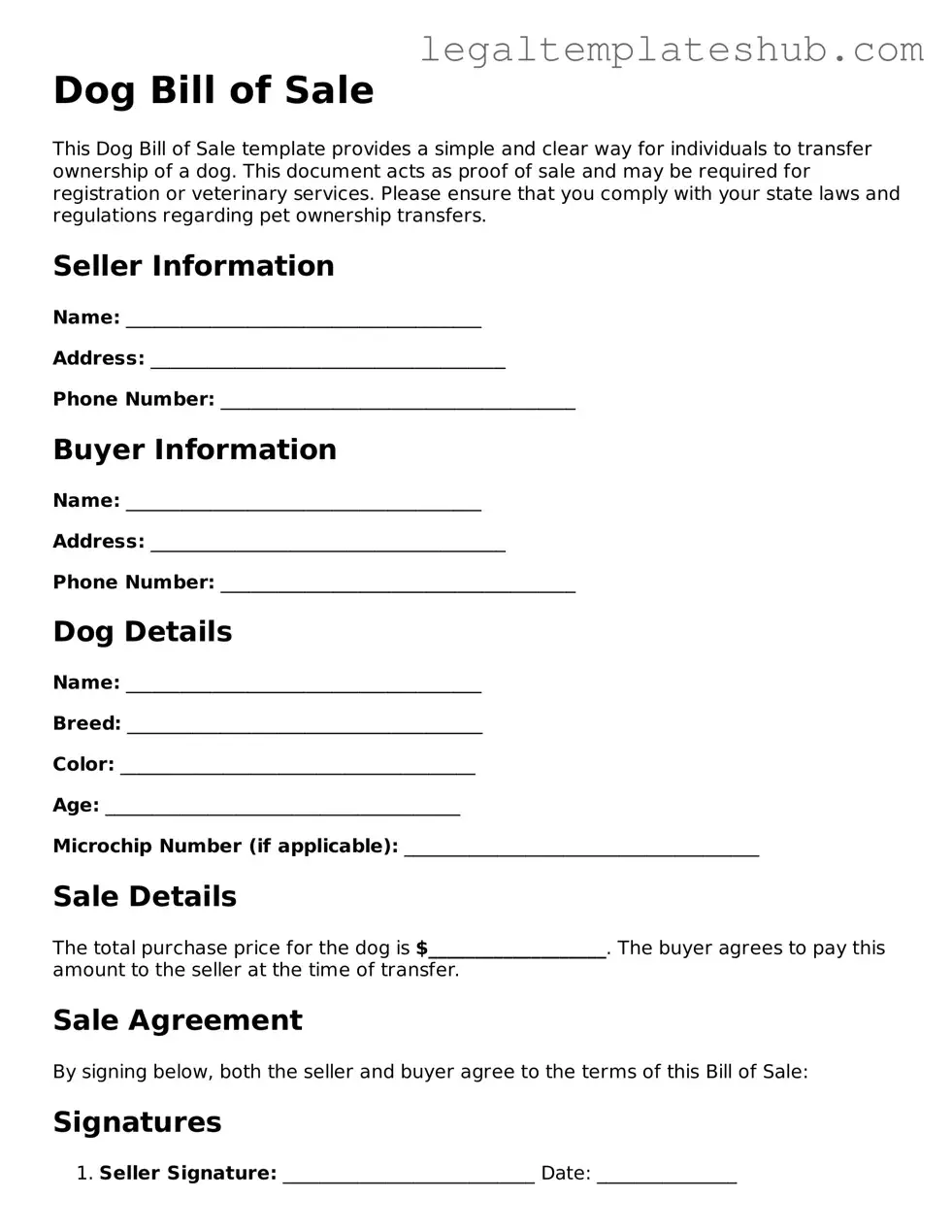Printable Dog Bill of Sale Template
The Dog Bill of Sale form is a legal document that facilitates the transfer of ownership of a dog from one party to another. This form provides essential details about the dog, including its breed, age, and health status, ensuring both the seller and buyer have a clear understanding of the transaction. To ensure a smooth transfer, consider filling out the form by clicking the button below.
Access Editor
